Do you enjoy crushing your thirst with a glass of cold beer you’ve made from scratch? Hefeweizen is an ideal beer for home brewing. And Americans have mastered it perfectly over the years.
It has a simple brewing process that you can complete with basic home brewing kits.
Why This Recipe Works
We like this recipe particularly because it’s a basic beer-brewing process. So, you can adjust it and use other ingredients to make any beer variety. It’s simple, fast, and yields a delicious, foamy hefeweizen with its classic cloudy look.
What You Will Need
Ingredients
- 5 Lb Pilsner malt
- 7 Lb Bohemian Pale Wheat Malt
- ¼ ounce German Halertau Blanc hops
- A pinch of Irish moss
- 9 gallons of water
Equipment
- Mash Tun
- 10-gallon kettle
- Burner
- Yeast
- Siphoning hose
- Long stirring spoon
- Wort chiller
- 6-gallon Carboy
- Infrared thermometer
How to Brew Hefeweizen
This Hefeweizen recipe is my favorite. It’s easy to follow and only requires basic equipment. Let’s go through the steps.
Step 1. Sterilize Your Equipment
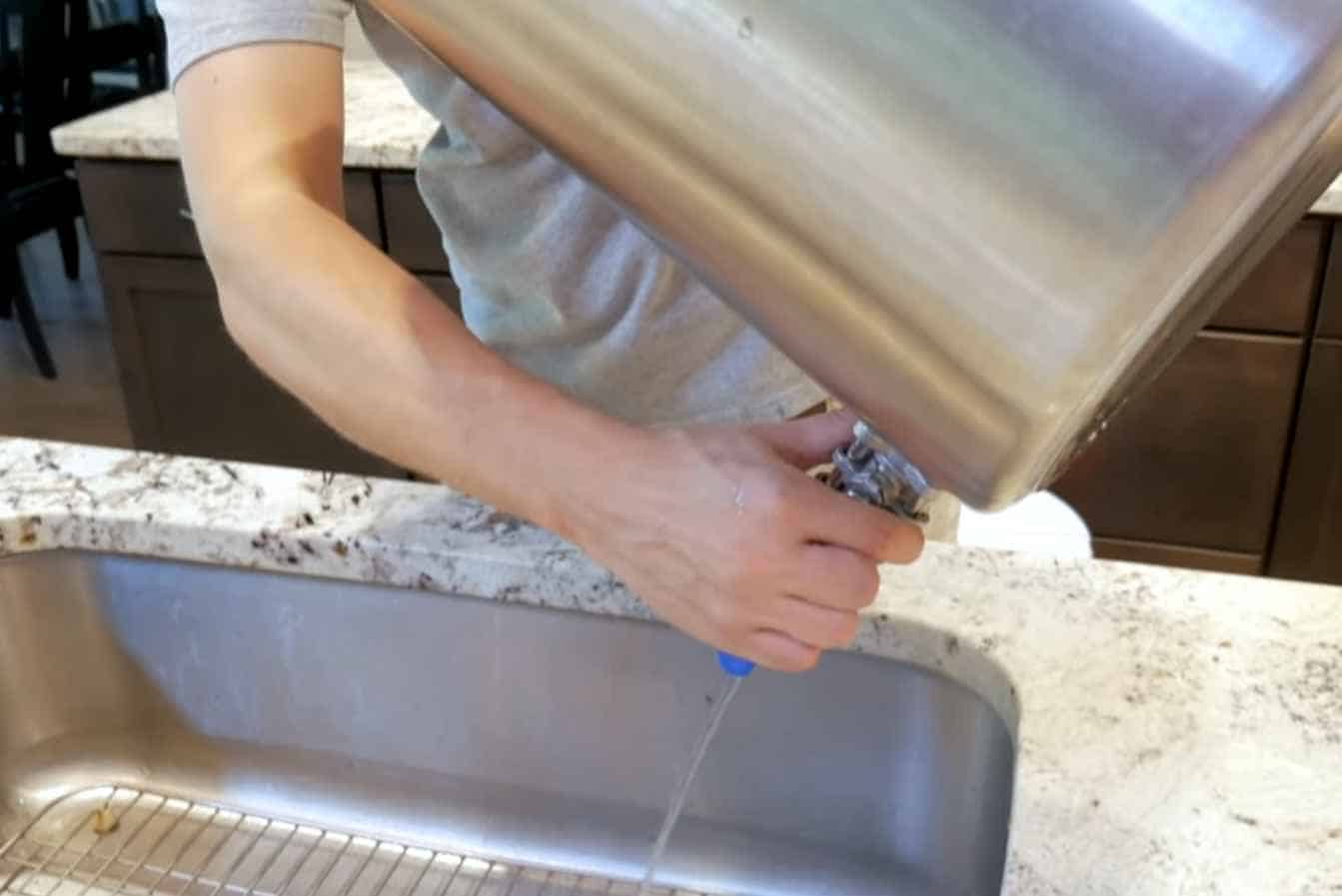
If your equipment isn’t sterilized, bacteria can get in and affect the taste and quality of your final product.
To sterilize your equipment, you can:
- Boil the equipment
- Use unscented bleach
- Wash with vinegar and hydrogen peroxide
- Sanitize with alcohol
My favorite material is Star Stan. It’s no rinse and comes with easy instructions. Make the solution based on the instructions and apply it to all your equipment.
Step 2. Set Up the Kettle
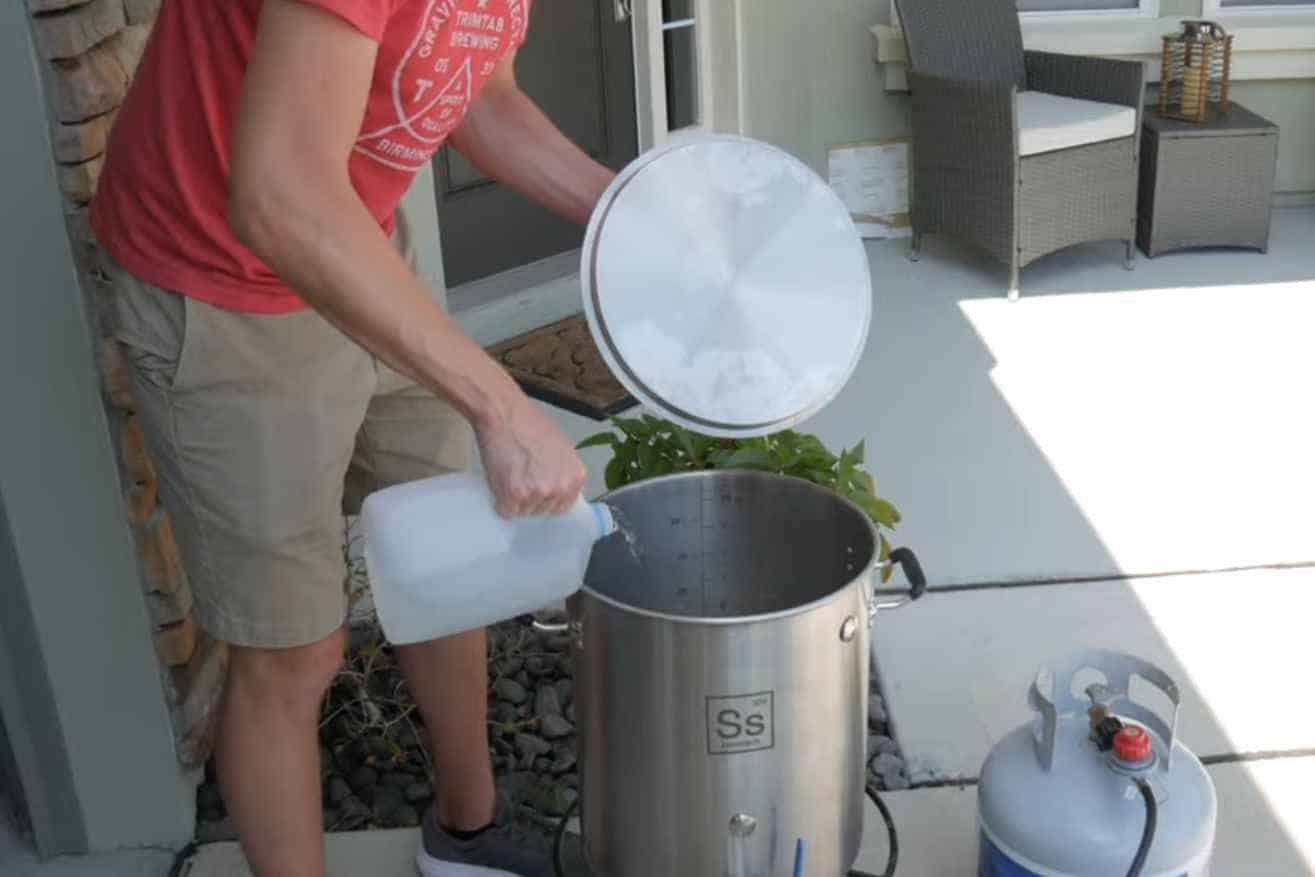
After setting up your burner, put your kettle on. Fill it with five gallons of water. Tap water is fine for brewing beer. But filtered water is better because tap water may have minerals or chemicals that affect your beer’s quality.
Turn on the burner and heat up the water to 162 F.
Step 3. Prepare the Yeast

Preparing the yeast depends on the strain and brand. Many home brewers prefer dry pitching. It involves pouring the yeast into hot wort. Others activate it by adding the yeast to warm water.
I use a specific brand of yeast, Wyeast. It’s liquid and has a reservoir inside. By smacking the reservoir, the activating liquid is released.
Wait one hour to see the bag inflate. It shows the yeast is activated, and you can add it to your wort. The yeast may have gone bad if you don’t see any swelling.
Step 4. Add the Grains to the Kettle
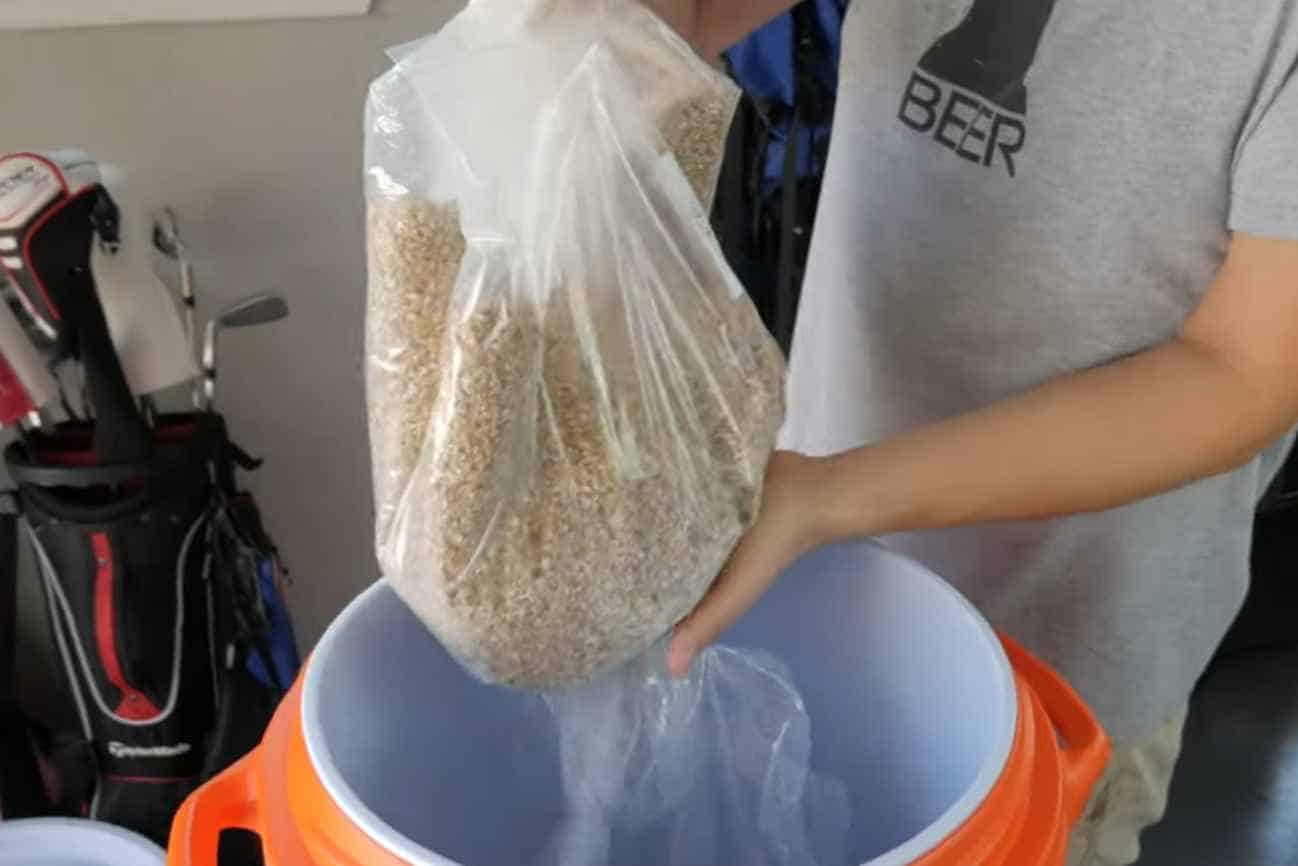
First, pour the grains into the mash tun. Then add the strike water. Give the mixture a gentle stir to let water touch all the grains. Close the lid and let it sit for an hour.
Step 5. Heat Up the Sparge Water
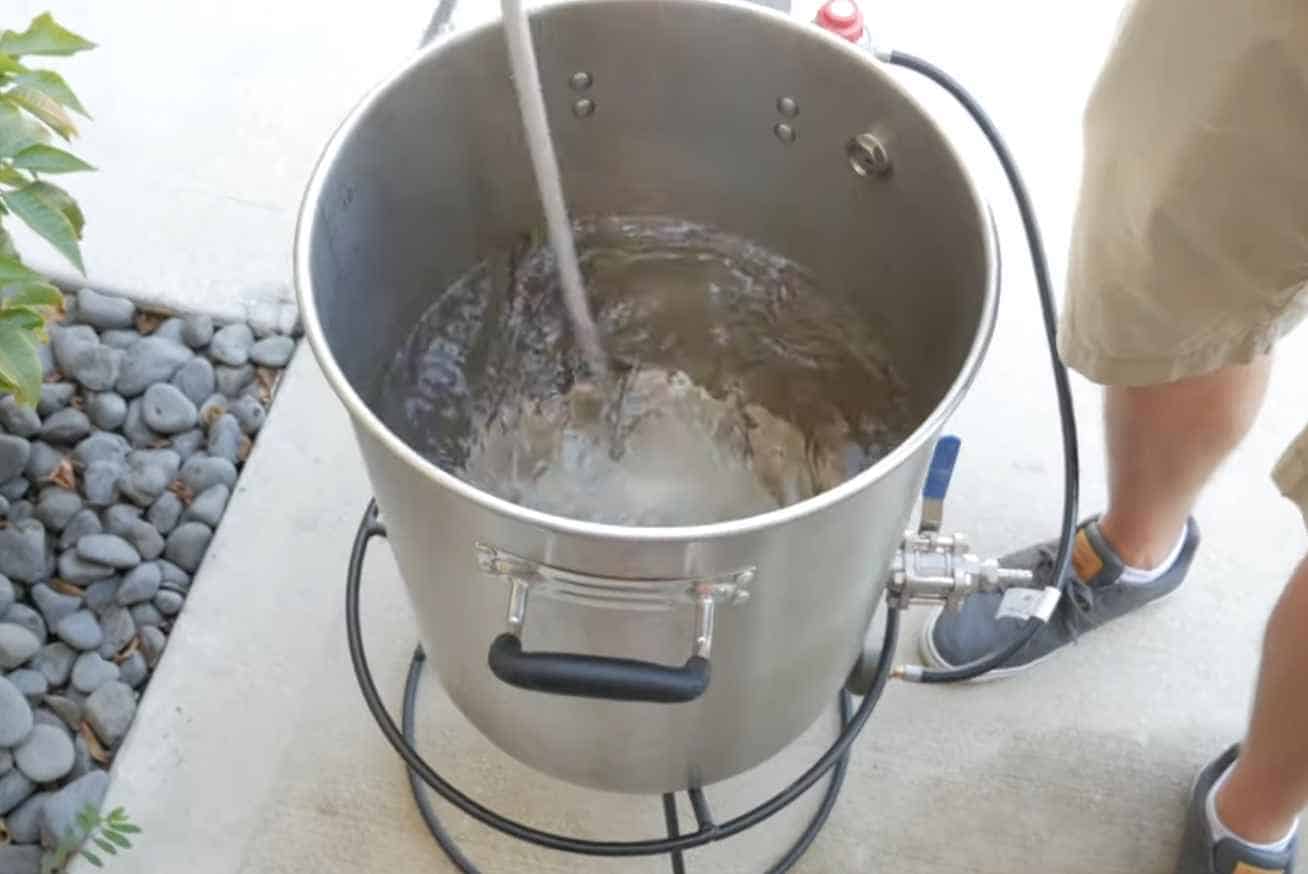
Sparge water is added to the mash to rinse it and extract more sugar. Add four gallons of water to the kettle and put it on the burner. Wait until the temperature gets to 180 F. Then, remove it from the heat and let it reach 170-180 F.
That’s the ideal temperature for sparging. Anything more than that will release the tannins and make the beer astringent.
Step 6. Drain the Wort
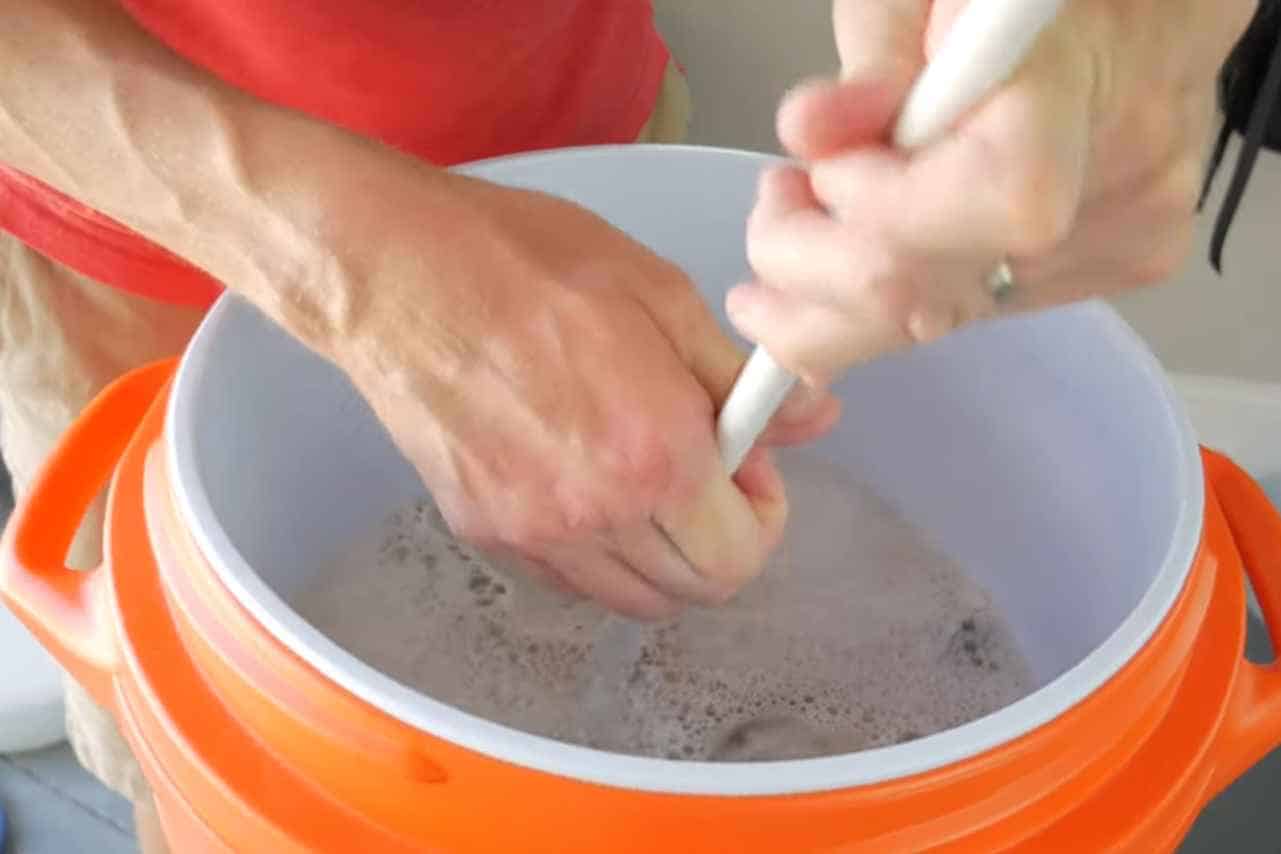
Attach the siphoning hose to the mash tun and put the other end into a sterilized bucket. Put the mash tun on a raised platform and the bucket underneath. This will help with the flow of the wort.
If you see grains in the drained wort, put the wort back into the mash tun and start draining again. Repeat until you get a clear wort.
Step 7. Start Sparging
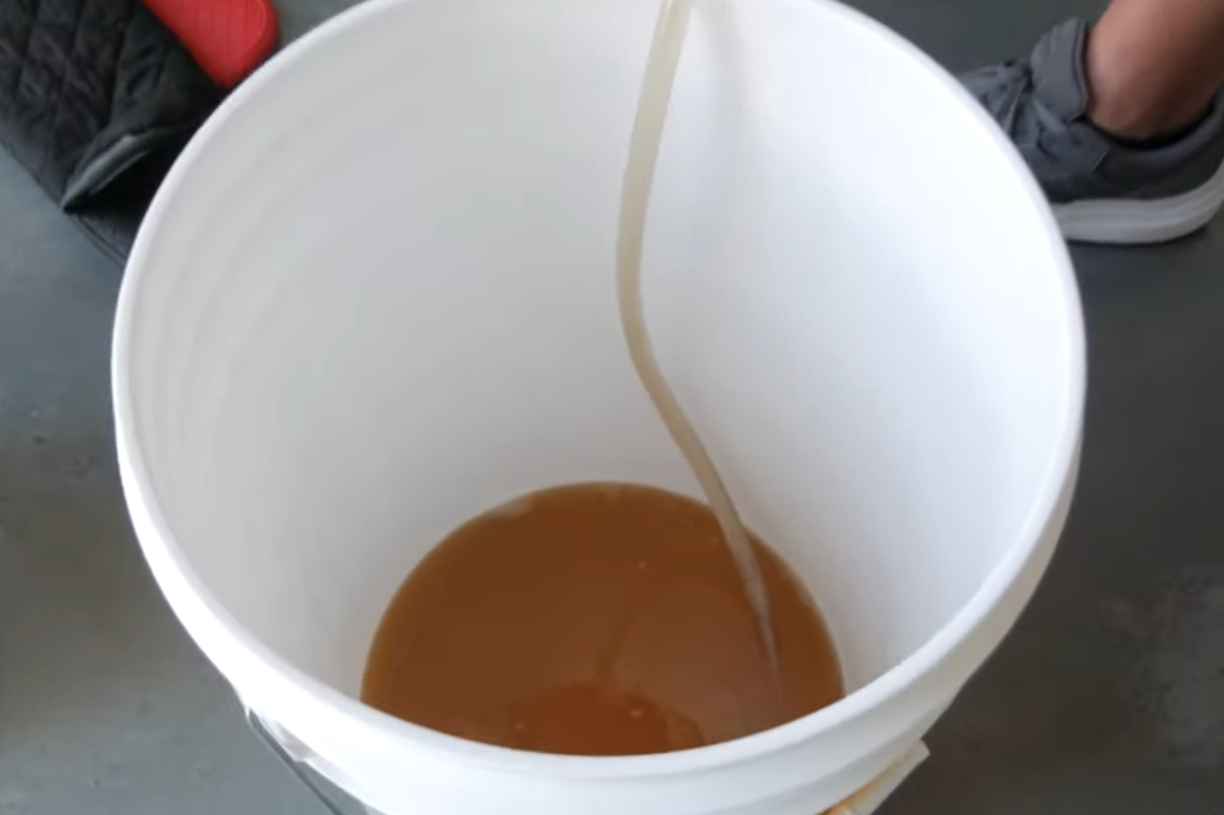
After draining the wort, put the bucket aside. Place the draining hose in a sanitizing liquid. Then, add the sparge water to the mashed grains in the mash tun.
Seal the mash tun and let it rest for ten minutes. Use the long spoon to stir the grains and prevent them from plugging in the bottom.
After ten minutes, drain the sparge water into a bucket. Again, you may need to put it back in the mash tun if grains get through.
Step 8. Boil the Wort
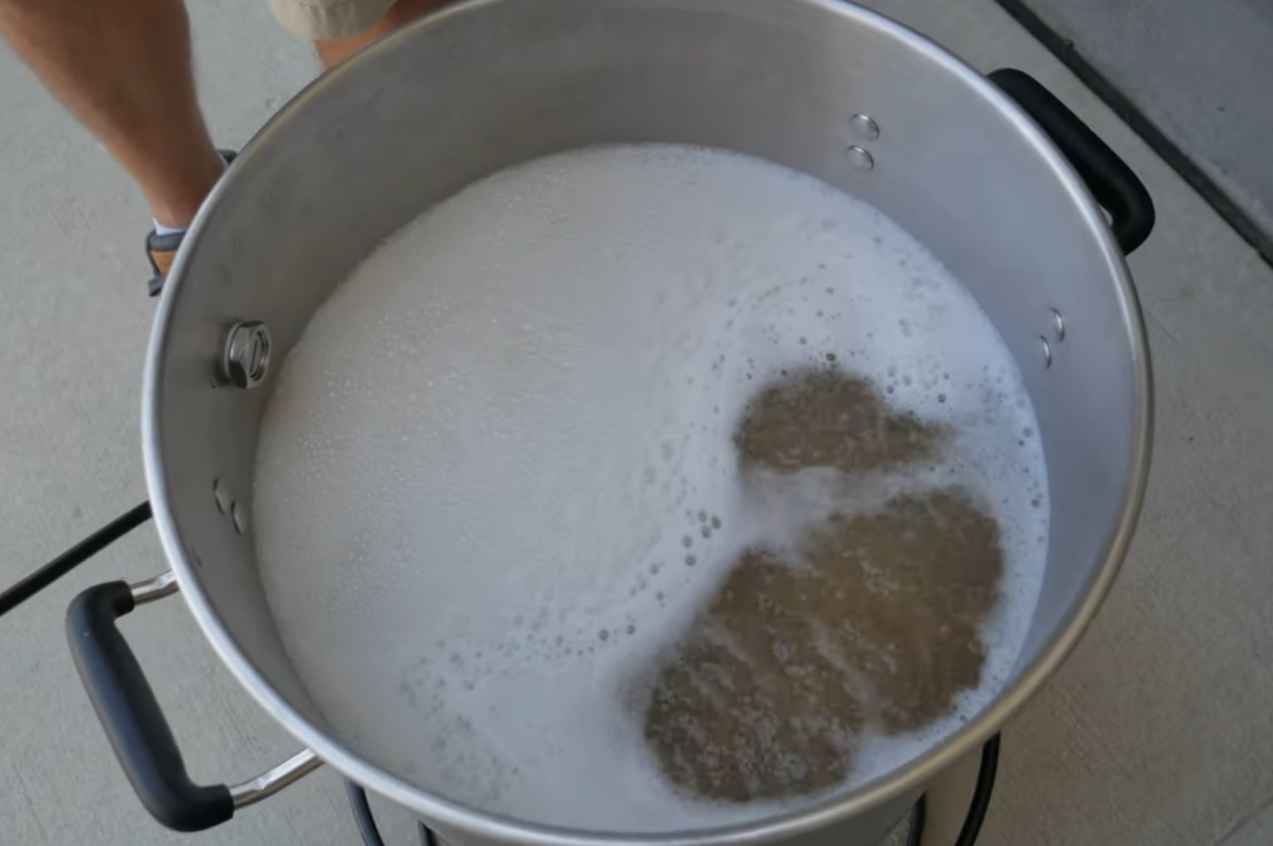
Add the concentrated wort and the sparged wort to the kettle. This should be around 7-7.5 gallons. Put the kettle on the burner and bring it to a boil. Remove the lid and let the wort boil for one hour.
Step 9. Add the Hops and the Irish Moss
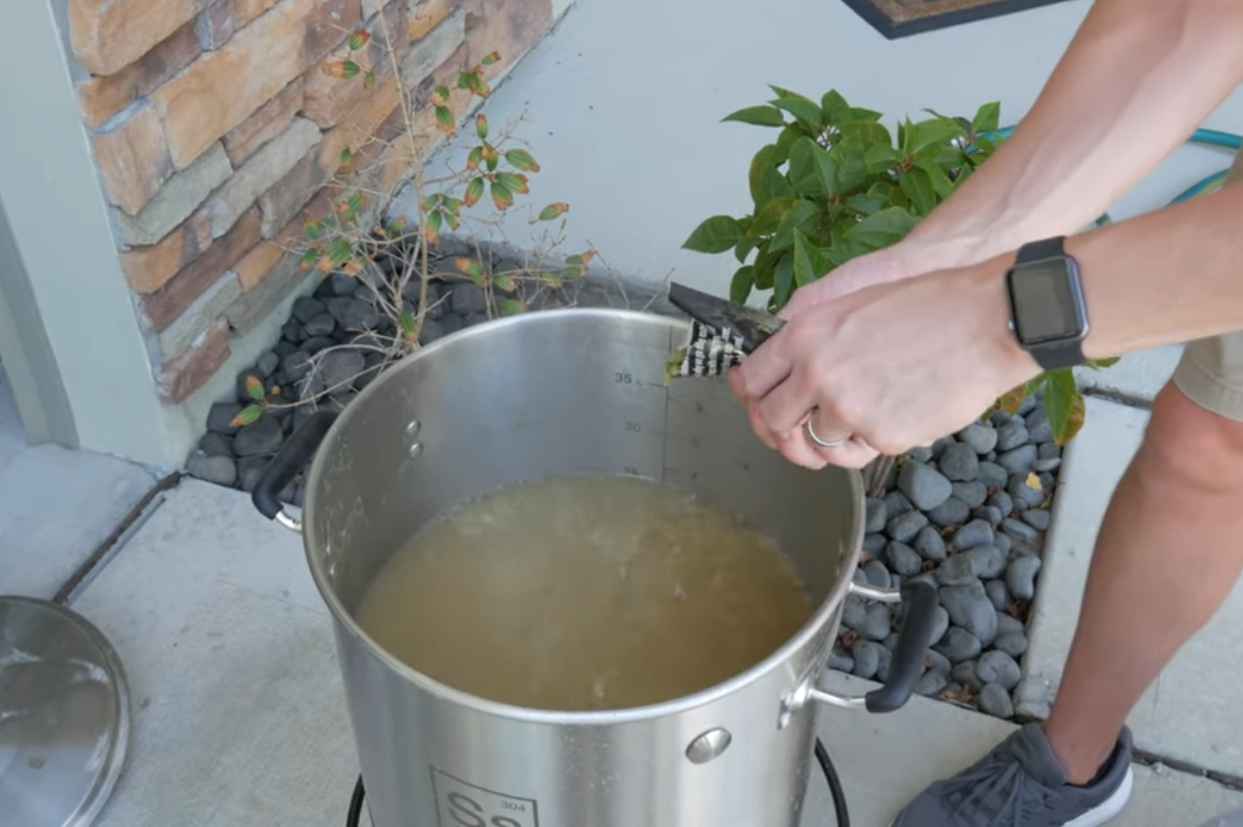
After 45 minutes of boiling, add the hops. The hop gives hefeweizen its signature fruity nose without making it bitter.
Wait another 5 minutes and add the Irish moss. It removes extra proteins that make hefeweizen hazy. But you don’t need to overdo it. Add a pinch to keep the haziness average.
Step 10. Place the Chiller
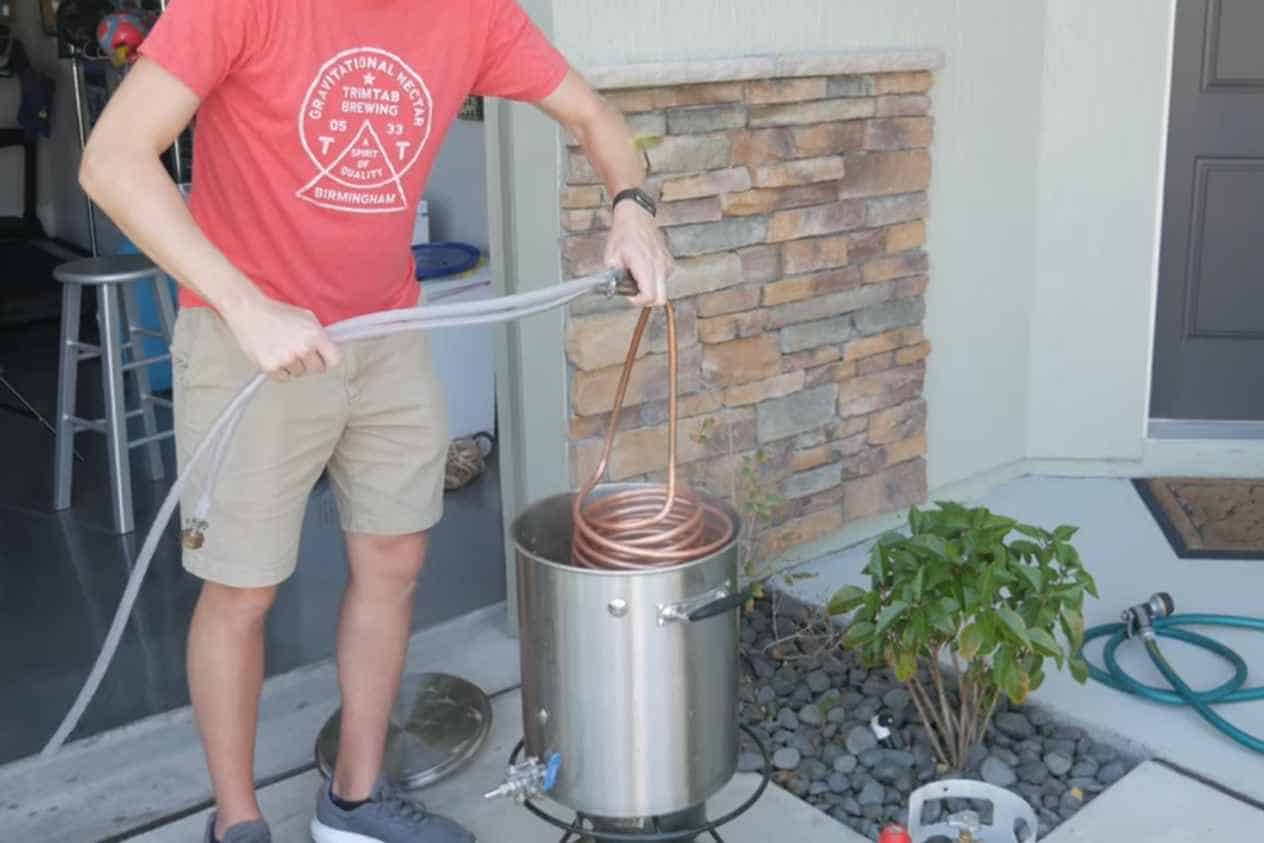
About 8 minutes before the boiling ends, put the wort chiller inside the kettle. You don’t need to sterilize the chiller. The high temperatures inside the boiling wort will kill the bacteria.
The wort is scorching hot and can splatter if you place the chiller without caution. Then, turn off the heat. The chiller has two hoses attached to it. One brings in the tap water, and the other brings out the heater water after circulating inside the coil.
Attach one hose to tap water. It’s better to connect another hose to the tap and attach it to the chiller’s coil. This is for safety reasons and helps you stay away from the mash tun once you turn on the tap water.
Step 11. Add the Yeast
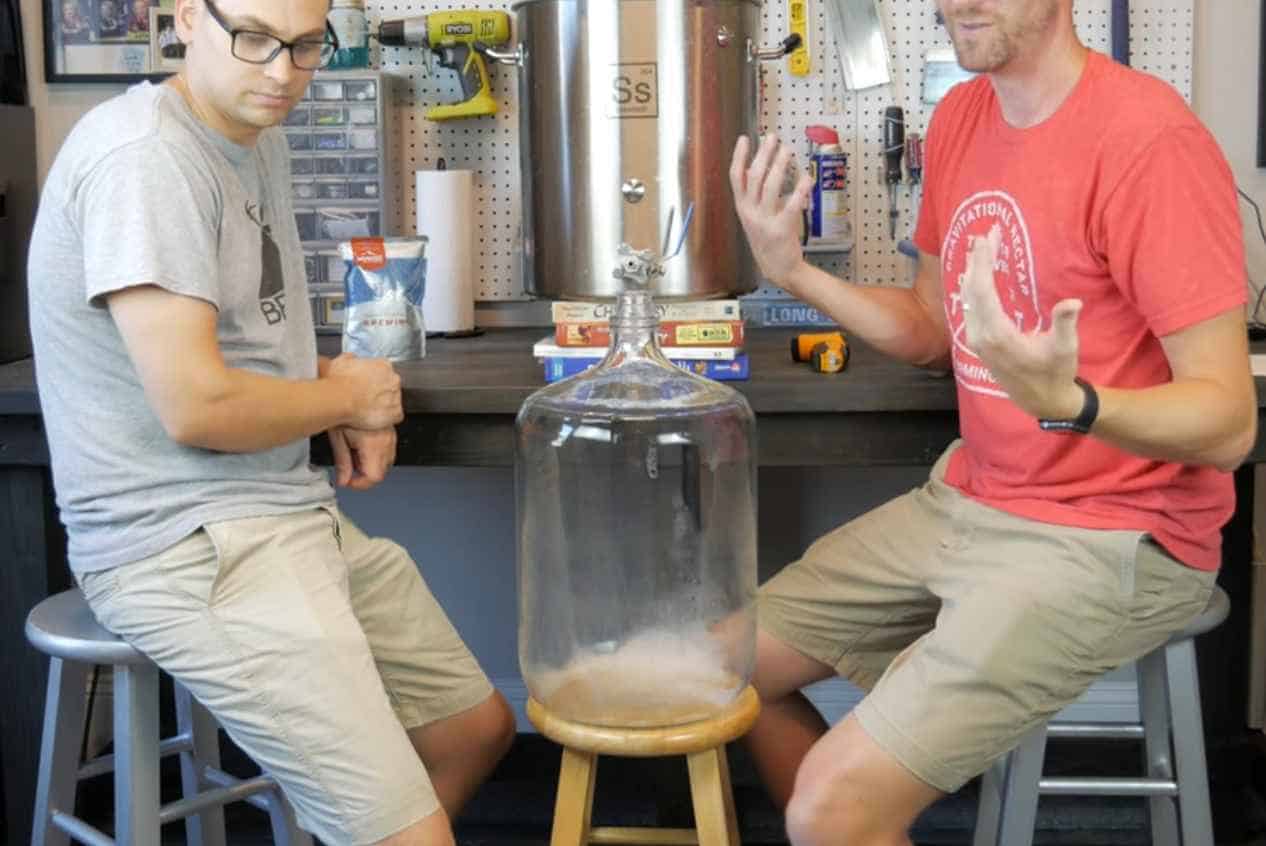
After 10 minutes, check the wort’s temperature. The goal is to get the same temperature inside the wort and on the water coming out of the exit hose. This shows that heat extraction has reached a balance. You want to reach 68 F, which is ideal for adding yeast.
Now, it’s time to pour the chilled wort into the sterilized carboy. Attach a siphoning hose to the mash tun and place the other end inside the carboy.
By now, the yeast is activated. A good indication is that the packet is expanded. Shake it well to ensure the yeast doesn’t stick to the bottom. Open the packet and pour the contents into the carboy filled with wort.
Step 12. Seal the Carboy
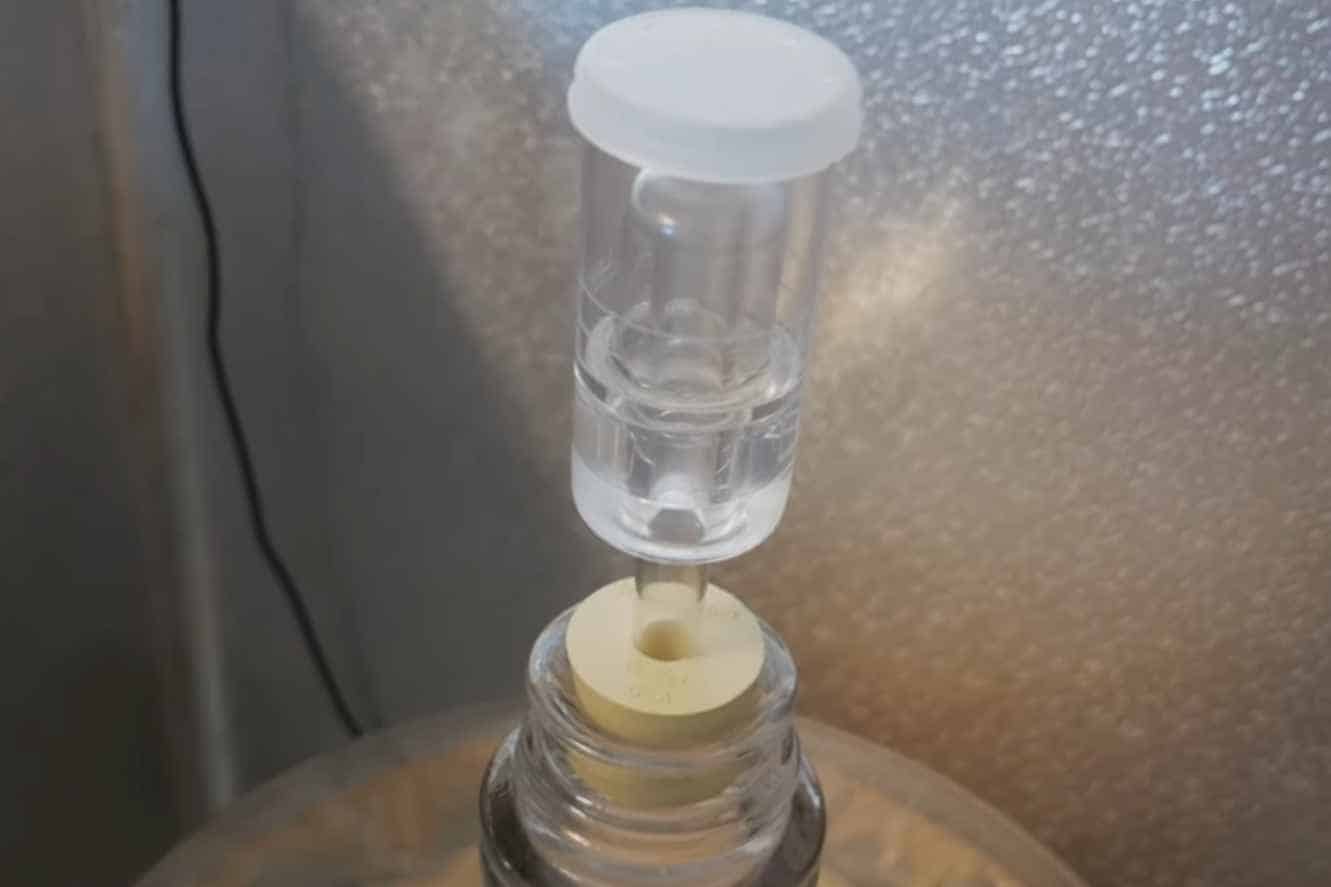
Fill the carboy’s airlock with some Star San solution and place the stopper inside. This way, when CO2 develops during fermentation, it will push the lid up. But the Star San solution keeps everything sanitized. Put the lid on the airlock and place the carboy inside a temperature-regulated chamber at 68 F.
Leave the carboy in the chamber for 13 days.
Step 13. Start Carbonating
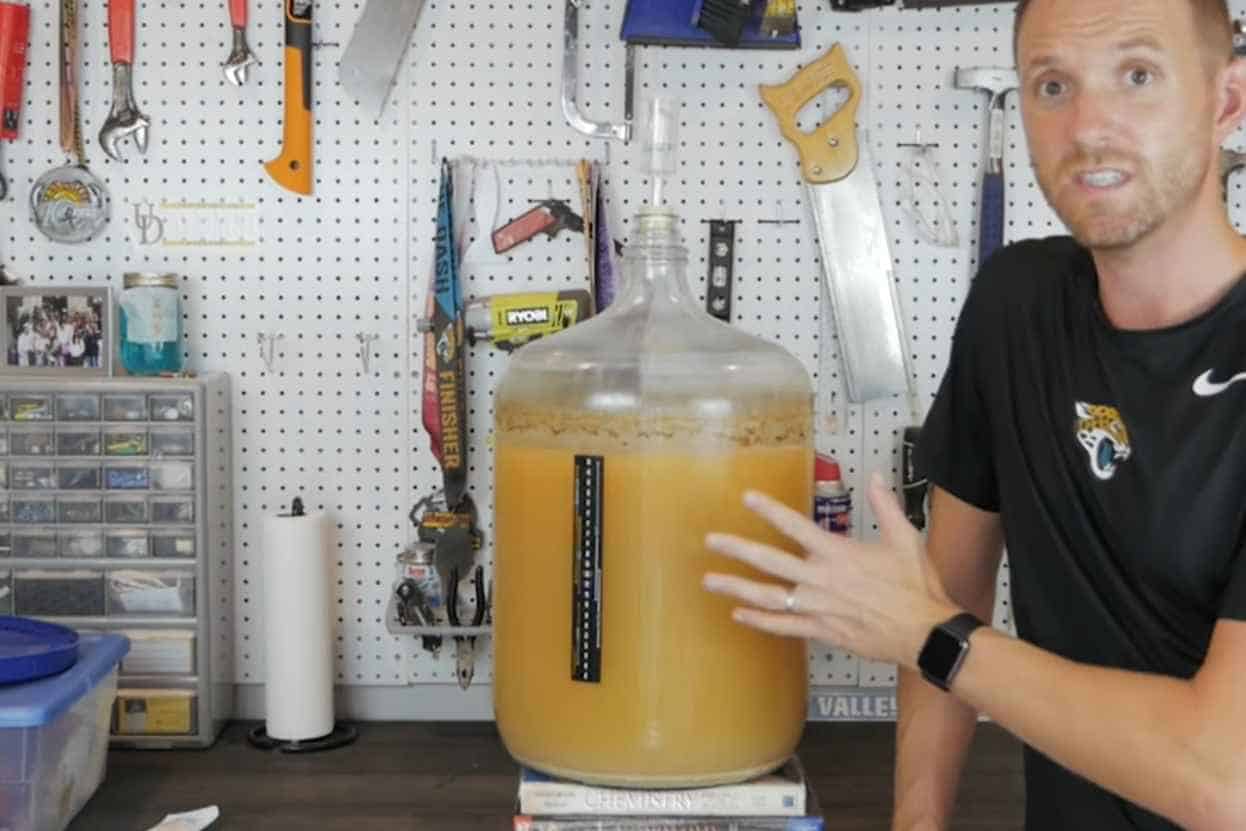
Sanitize your keg and its lid with a Star San solution. Psiphon the beer from the carboy into the keg. Place the siphoning tube above the bottom of the carboy to prevent yeast from getting into the keg. Stop siphoning before reaching the yeast cake at the bottom.
Attach the CO2 canister to the keg and set the PSI gauge to 25. Release the keg’s lid a bit to let the remaining oxygen out and ensure it’s only filled with CO2. Put the keg on its side and shake it for 5 minutes to let the CO2 move freely inside.
Put the keg and the canister in the chamber. And wait for two days until your brew is ready.
Note. Keep a bucket of Star San solution handy. You want to sanitize every single piece of equipment that comes into contact with your beer.
Tips and Tricks
This recipe is straightforward. But following these tips helps you get a better brew.
- Washing is not sanitizing. Your equipment may be spotless but not bacteria-free. So, first, wash and rinse your tools. Then sterilize them.
- Keep the hops low. Hefeweizen is a wheat beer. It’s sweet and bready. So, keep the number of hops as low as possible.
- Use very little Irish moss. Hefeweizen is a hazy beer. Using too much Irish moss will lead to a crystal-clear beer that doesn’t have a true Hefewesen character.
- The ideal temperature for adding yeast is 70 F. But if you can’t reach it due to hot weather, ensure the existing water’s temperature is the same as the wort’s.
Frequently Asked Questions
Are Weissbier and Hefeweizen the Same?
Weissbier is a general term referring to any white bear. In German, it translates to white beer. Hefeweizen is a type of Weissbier, which is a classic Bavarian wheat beer. It has a high percentage of wheat and is cloudy, malty, and fruity.
Is Hefeweizen Made with Hops?
Hops are used in making Hefeweisen to give it a fruity flavor. But the amount of hops is very low to keep the bready and malty flavor of Hefeweisen while reducing its bitterness.
Is Hefeweizen a Lager or Ale?
Hefewesen is technically an ale because of the top-fermentation style. The yeast is fermented at the top of the liquid and yields a medium alcohol content. Hefeweizen gets its creamy texture and hazy appearance from the high percentage of wheat.
Summary
Making hefeweizen at home is such a satisfying and fun process. With the right ingredients, equipment, and methods, you can brew a hefeweizen that tastes like the classic Bavarian hefeweizen.
13 Steps To Brew Hefeweizen
Course: Recipe1
servings1
hour300
kcalIngredients
5 Lb Pilsner malt
7 Lb Bohemian Pale Wheat Malt
¼ ounce German Halertau Blanc hops
A pinch of Irish moss
9 gallons of water
Directions
- Wash, sanitize, and sterilize every piece of equipment used in the brewing process.
- Fill the kettle with 5 gallons of water and bring it to a boil.
- Activate the yeast according to the instructions.
- Mix the grains and the strike water in the mash tun.
- Prepare the sparge water by adding 4 gallons to the kettle and bringing it to a boil.
- Siphon the wort into a separate bucket, ensuring no grains get out.
- Put the wort on the heat source and boil it for one hour.
- 10 and 5 minutes before boiling is over, add the hops and Irish moss to create your desired texture and flavor.
- Cool down the wort by placing the chiller inside it.
- Siphon the wort into the carboy and start fermenting by adding the yeast.
- Place the carboy in the chamber at 68 F and keep it there for 13 days.
- Pour the fermented beer into a keg to give it your desired carbonation.

As a homebrewer, Michael would get frustrated about the lack of brewing information on the internet. After hundreds of gallons of spoilt batches, Micheal had enough. And he founded Unknown Brewing as a resource for homebrewers.

